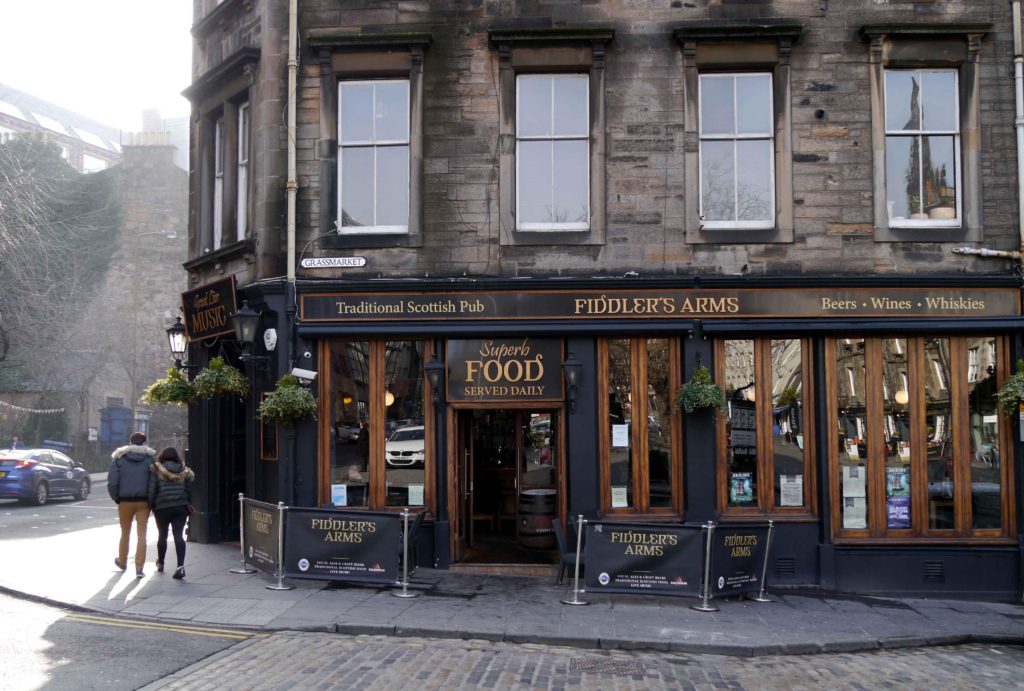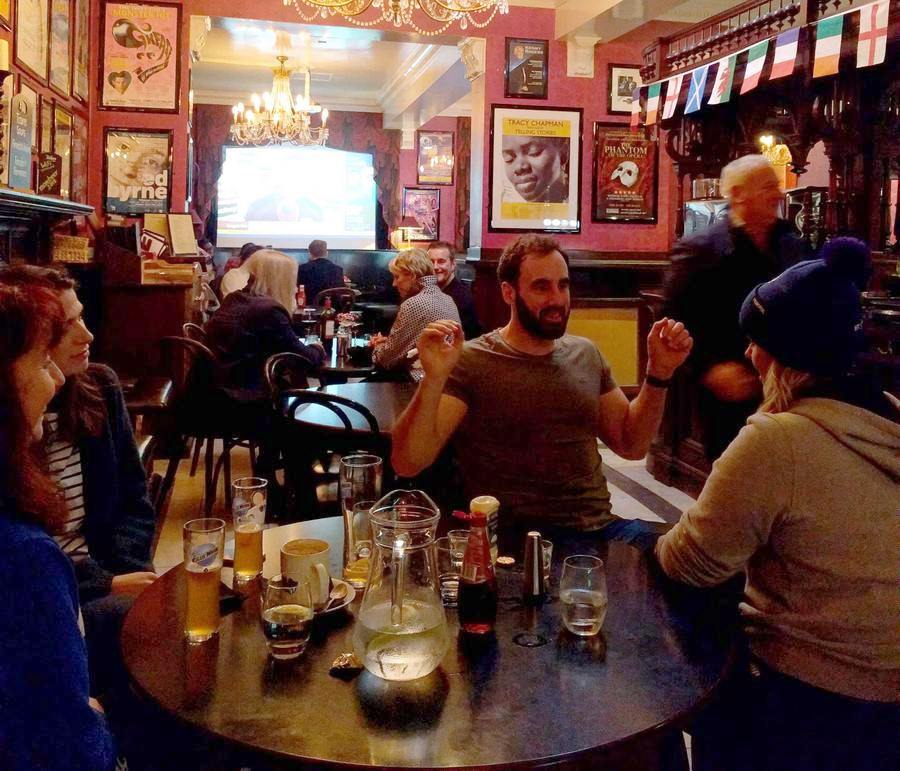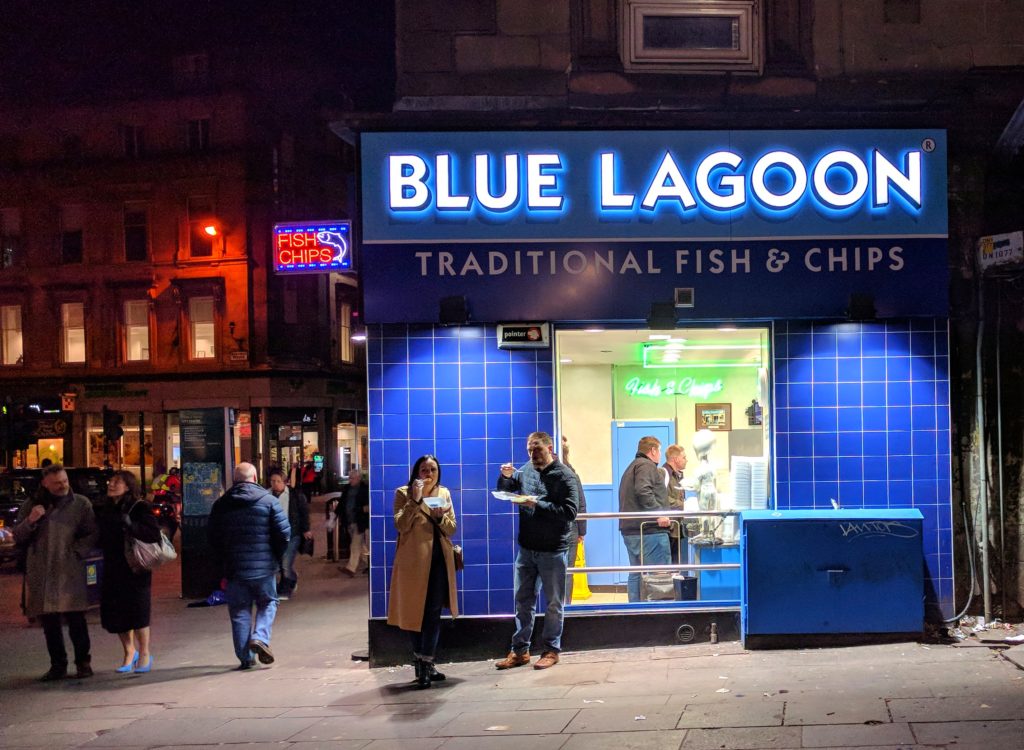
We wonder if the Scottish diet was invented sometime at the end of the last Ice Age. On our recent late-winter visit to Glasgow and Edinburgh, we found that such Scottish specialties as cullen skink, neeps and tatties, Arbroath smokies, Scotch pie, and even the ubiquitous haggis have a special appeal when the temperature hovers around the freezing point and the weatherman won’t commit to whether it will rain or snow.
 Nordic cuisine continues to have a moment on the international gourmet scene. We found that eating in Scotland was an excellent way to get in touch with the roots of high-latitude foodstuffs before the trendy restaurants of Copenhagen and Bergen started tinkering with them. There’s a pure honesty to a cuisine based on short-season grains like oats and barley—which give us porridge, pints, and whisky—and humble root vegetables like potatoes, leeks, and swedes. (We call that last one “rutabaga” in the U.S. It’s a cross between a cabbage and a turnip and the Scottish-grown examples taste surprisingly sweet.)
Nordic cuisine continues to have a moment on the international gourmet scene. We found that eating in Scotland was an excellent way to get in touch with the roots of high-latitude foodstuffs before the trendy restaurants of Copenhagen and Bergen started tinkering with them. There’s a pure honesty to a cuisine based on short-season grains like oats and barley—which give us porridge, pints, and whisky—and humble root vegetables like potatoes, leeks, and swedes. (We call that last one “rutabaga” in the U.S. It’s a cross between a cabbage and a turnip and the Scottish-grown examples taste surprisingly sweet.)
Most of the fish we encountered were cold water ground feeders like cod and haddock. The featured meats were mild Scottish lamb and superb Scotch beef—the first red meat in Europe to gain protected geographic status. Keep in mind that the Scots bred the tasty Aberdeen Angus as well as the shaggy Highland cattle that shrug off winter with the aplomb (and much of the appearance) of an Arctic musk ox. The lamb is self-explanatory if you look in any field outside the city.
Beckoning warmth of the table and bar
We’re already hard-wired to get hungry in any season when darkness owns more hours than daylight. The short days of a Scottish winter gave eating and drinking places a special appeal. As the light faded, we found ourselves drawn to the golden glow spilling from restaurant windows.
 The animated buzz of whisky bars—already a level above the murmur of mere beer pubs elsewhere—seemed to call our names. Even the smell of hot grease and the inevitable neon of chippies (fish and chips places) made us instantly nostalgic for a culinary tradition that we’d never been part of.
The animated buzz of whisky bars—already a level above the murmur of mere beer pubs elsewhere—seemed to call our names. Even the smell of hot grease and the inevitable neon of chippies (fish and chips places) made us instantly nostalgic for a culinary tradition that we’d never been part of.
 During the day, ducking in for a bowl of leek and potato soup, a mug of tea, or a sinfully sweet bite in a tea room took the edge off the chill and brightened the gloom of the most leaden sky. When the heavens suddenly cleared one day and a bright blue sky stretched from horizon to horizon, the aroma of hot sausages sizzling on a griddle lured us back indoors for sustenance—but at a window table. Over the next few weeks, we’ll be exploring some of the highlights of eating and drinking in Glasgow and Edinburgh. We hope you enjoy the ride. Sláinte!
During the day, ducking in for a bowl of leek and potato soup, a mug of tea, or a sinfully sweet bite in a tea room took the edge off the chill and brightened the gloom of the most leaden sky. When the heavens suddenly cleared one day and a bright blue sky stretched from horizon to horizon, the aroma of hot sausages sizzling on a griddle lured us back indoors for sustenance—but at a window table. Over the next few weeks, we’ll be exploring some of the highlights of eating and drinking in Glasgow and Edinburgh. We hope you enjoy the ride. Sláinte!

